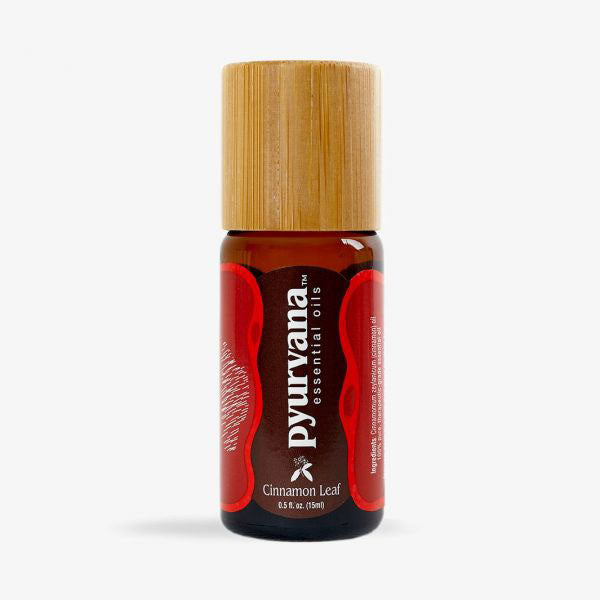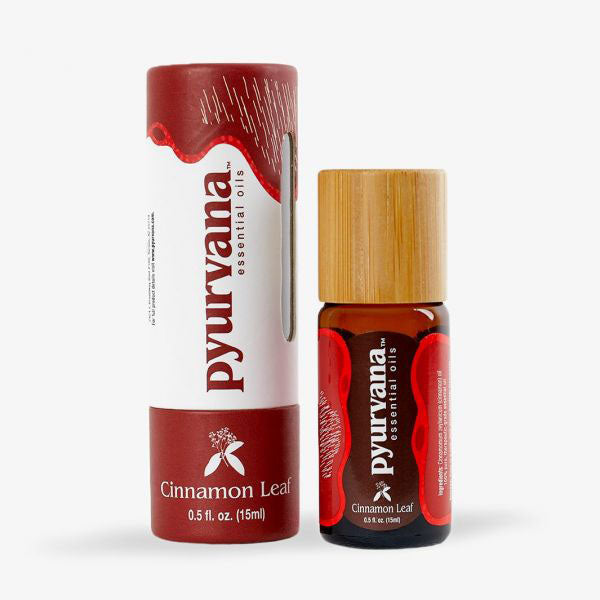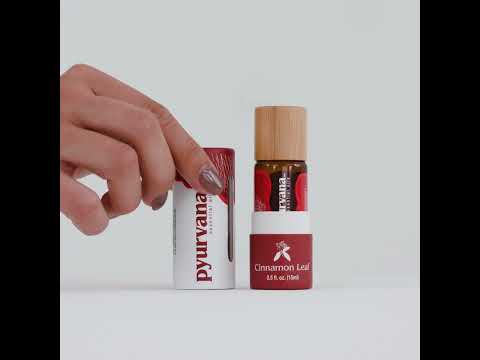Cinnamon Oil (Leaf) – 15ml
Cinnamon Oil (Leaf) – 15ml
Couldn't load pickup availability

Compared to cinnamon bark oil, cinnamon essential oil distilled from the leaves has a higher concentration of eugenol. This gives it a scent that is closer to that of clove oil.
More Information

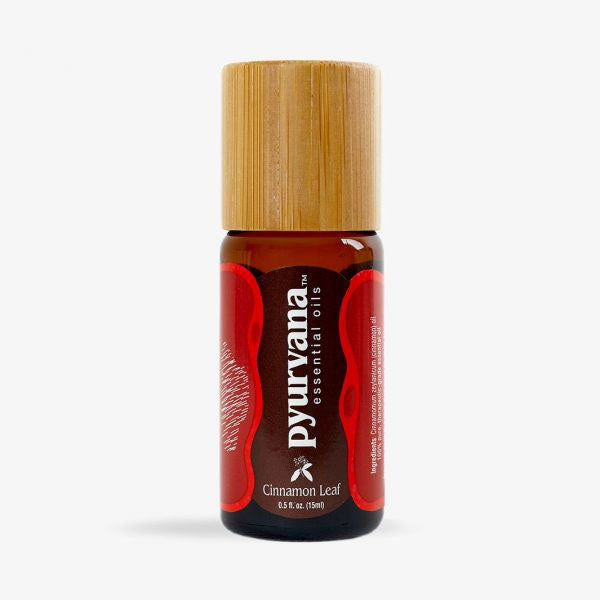
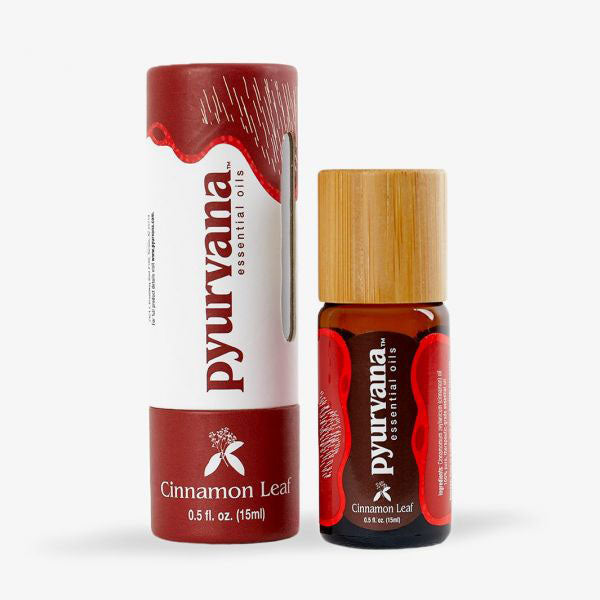
Cinnamon Leaf Oil: Essential Oils by Pyurvana™
What is Cinnamon Essential Oil?
The Cinnamomum genus is made up of evergreen trees that have aromatic leaves and bark. Cinnamomum zeylanicum, also called Cinnamomum verum or true cinnamon, is one of the most recognizable of these species. Most of the cinnamon spice comes from this variety of tree. We distill our cinnamon essential oil from trees grown in Sri Lanka.
The spice cinnamon has been in existence since ancient times. Historians estimate that it was first obtained from the bark of Cinnamomum trees and used by the Ancient Egyptians as early as 2000 BC. The source of the spice was kept a secret for a long time to keep its value high. While the spice made from cinnamon bark may be more common, the leaves are often used similar to bay leaves to add flavor to curries or stews.
Cinnamon bark and cinnamon leaf can both be used to distill essential oil. Oil made from the bark tends to smell more similar to the spice. The main benefit of cinnamon leaf essential oil is that it contains a higher concentration of eugenol. To extract our cinnamon leaf oil, we use steam distillation. This involves placing cinnamon leaves into a large vat and introducing steam. This vaporizes the scent molecules in the leaves, which are then condensed, collected, and purified.
Complementary Scents
Cinnamon leaf oil is very similar to cinnamon bark oil in terms of its scent pairing. Mixing it with citrus oils such as lemon, bergamot, grapefruit, or orange can create a lovely contrast and an uplifting aroma. You can also try combining it with peppermint oil.
Primary Benefits
The eugenol in cinnamon essential oil makes it a great additive for skin care products. You should make sure to dilute it properly. This essential oil can brighten your skin and help to nourish any dry areas. Always test on a small area first to check for sensitivity.
Cinnamon leaf and cinnamon bark have very similar aromas. Both can give your home an inviting and uplifting scent whether used alone or in a blend with other oils. This scent reminds many people of winter, so it’s a great way to evoke memories of the holiday season, no matter the time of year. This is especially true if you mix it with other oils such as clove and peppermint.
How to Use Cinnamon Essential Oil
Add a few drops to your essential oil diffuser, making sure to follow the directions for your unit. This will fill any room with the delightful scent of our cinnamon leaf oil. Make sure not to add too much or keep the diffuser running for longer than a few hours, as this may result in an overpowering aroma.
It is important to dilute any 100% pure essential oil with a carrier oil before applying it topically. This is especially true for cinnamon since it is stronger than many other oils. You should use three drops per teaspoon of carrier oil if you are using it for a warming massage or three drops in four teaspoons of carrier oil for any wider or long-term application. Some people have greater sensitivity to essential oils and allergies are also a potential concern. If you notice any adverse reaction, stop using the essential oil immediately and consult with your doctor.
Cautions
Cinnamon leaf oil has strong components that can burn your skin, so it is especially important to dilute this essential oil with a carrier before any topical application. You should also avoid sensitive areas such as around your eyes, ears, or nose. Test on a small area first to make sure that you do not have an adverse reaction and if you do notice any negative effects, stop use immediately and seek medical attention. You should also never use this oil in your bath. This is because, even when diluted, it can collect on the surface of your bathwater and cause a reaction, especially on sensitive areas of skin. Always exercise caution and inform your doctor if you have any concerns.
Keep out of reach of children.
If you are pregnant, nursing, or under the care of a physician, consult your health care provider before using cinnamon or any other essential oil.
This essential oil is for external use only and should not be ingested.
Pure essential oils are flammable and should be stored in a cool, dry location away from any open flames or excess heat.
What's Trending
-
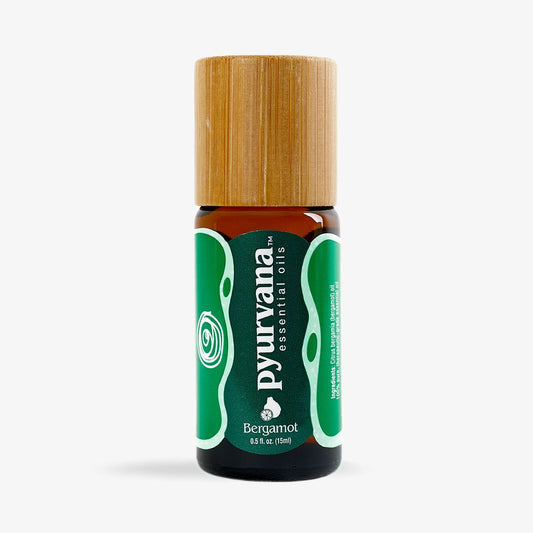 30%
30%
OFFBergamot Oil – 15ml
Regular price $16.10Regular priceUnit price / per$23.00Sale price $16.10Sale -
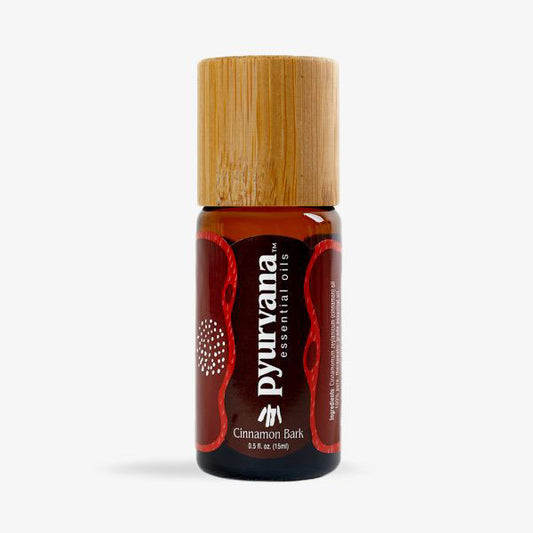 30%
30%
OFFCinnamon Oil (Bark) – 15ml
Regular price $14.00Regular priceUnit price / per$20.00Sale price $14.00Sale -
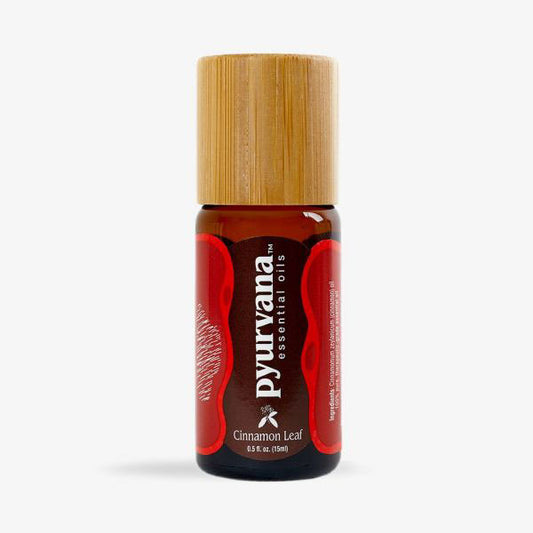 30%
30%
OFFCinnamon Oil (Leaf) – 15ml
Regular price $16.80Regular priceUnit price / per$24.00Sale price $16.80Sale -
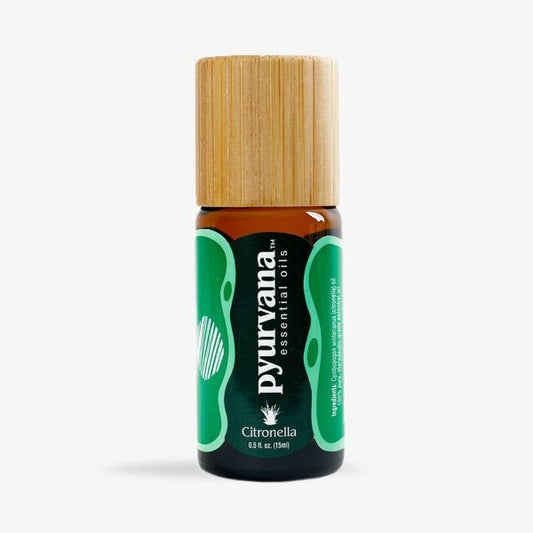 30%
30%
OFFCitronella Oil – 15ml
Regular price $10.50Regular priceUnit price / per$15.00Sale price $10.50Sale -
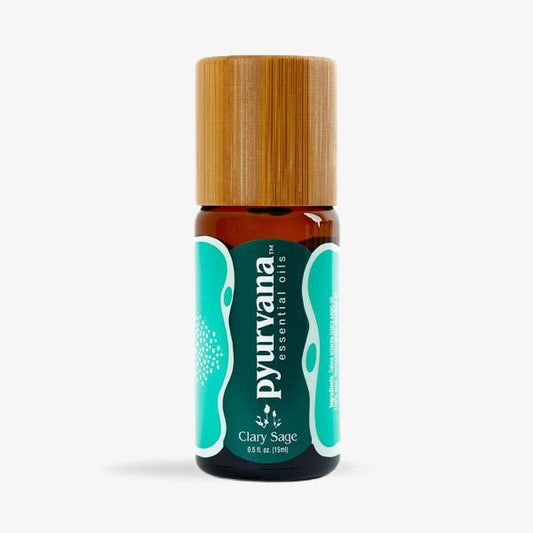 30%
30%
OFFClary Sage Oil – 15ml
Regular price $21.00Regular priceUnit price / per$30.00Sale price $21.00Sale

